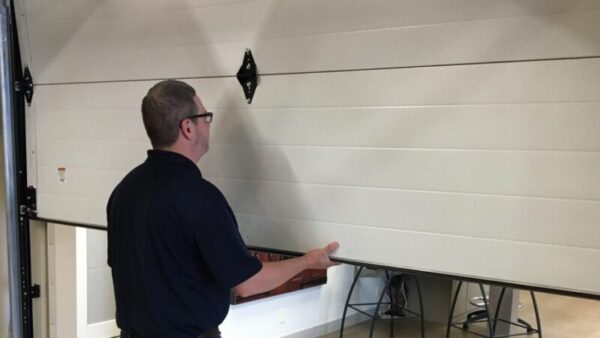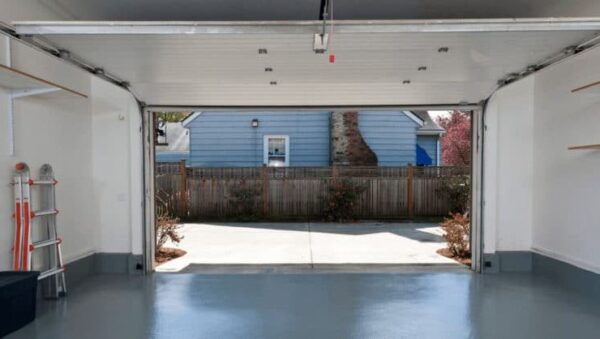Garage doors, though seemingly simple, are intricate systems that require precise balance for safe and quiet operation. A well-balanced garage door not only enhances your safety but also ensures a longer lifespan for your door opener and other mechanical components. In this comprehensive guide, we will delve into the art of garage door balance, exploring the importance of balance, signs of imbalance, and step-by-step methods to achieve optimal balance for a quieter and safer garage door operation.
The Significance of Garage Door Balance:
Achieving the right balance for your garage door is crucial for several reasons. First and foremost, a balanced garage door exerts less strain on the door opener motor. When a door is imbalanced, the opener has to work harder, leading to premature wear and tear. This not only shortens the lifespan of your opener but also increases the risk of sudden failure, leaving your garage door inoperable.
Moreover, a well-balanced garage door operates quietly. The noise generated by an imbalanced door can be annoying and disruptive, especially if your garage is located near bedrooms or living spaces. Achieving the perfect balance eliminates unnecessary noise, providing a peaceful environment for your home.
Signs of an Imbalanced Garage Door:
- Uneven Movement: An imbalanced door often exhibits uneven movement. You might notice one side of the door rising or lowering faster than the other, leading to a skewed appearance.
- Difficulty in Manual Operation: Attempting to manually open or close the garage door becomes challenging when it’s imbalanced. You may find it harder to lift or lower the door.
- Loud Noises: An imbalanced garage door produces loud noises during operation. These noises can range from grinding sounds to squeaks and rattles, indicating friction and strain on various components.
- Visible Gaps: When the door is in the closed position, you might notice uneven gaps between the door and the floor, indicating an imbalance in the springs or cables.
- Jerky Movements: The door might move in a jerky, erratic manner instead of the smooth, controlled motion that signifies a balanced door.
Achieving Garage Door Balance:
Achieving the perfect balance for your garage door involves a systematic approach. Here’s a step-by-step guide to help you achieve a safer and quieter operation:
1. Inspect the Springs: Begin by inspecting the springs. Garage doors typically use either torsion springs (mounted above the door) or extension springs (mounted on both sides). Check for signs of wear, rust, or damage. If you notice any issues, it’s best to replace the springs to ensure optimal balance.
2. Check the Cables: Inspect the cables that are attached to the springs. Look for fraying, wear, or any signs of damage. Damaged cables can cause the door to operate unevenly. If you find any problems, replace the cables promptly.
3. Assess the Rollers: Examine the rollers that guide the door along the tracks. Worn-out or damaged rollers can cause the door to move unevenly. Lubricate the rollers with a silicone-based lubricant to ensure smooth movement.
4. Balance the Springs: If you have torsion springs, you can balance them by adjusting the tension. This should ideally be done by a professional garage door technician, as adjusting the tension incorrectly can be dangerous. Extension springs can be adjusted by adding or removing tension from the springs.
5. Lubricate Moving Parts: Lubricate all moving parts, including hinges, rollers, and springs. Proper lubrication reduces friction, ensuring smooth and quiet operation.
6. Test the Balance: Once you’ve made the necessary adjustments and lubricated the components, test the balance of the door. Disconnect the opener and operate the door manually. It should move smoothly without any jerks or unevenness. If you still notice issues, recheck the springs and other components for proper adjustment.
7. Regular Maintenance: Regular maintenance is key to preserving the balance of your garage door. Schedule annual inspections with a professional technician who can identify and address any issues before they escalate.
Conclusion:
Mastering the art of garage door balance is essential for a safer and quieter operation. By understanding the signs of imbalance and following a systematic approach to inspection and maintenance, you can ensure that your garage door operates smoothly, quietly, and safely. Don’t hesitate to seek professional help if you encounter any difficulties during the balancing process, as the safety of you and your family should always be the top priority. With a well-balance garage door, you can enjoy peace of mind, knowing that your home is equippe with a reliable and efficient entry point.





